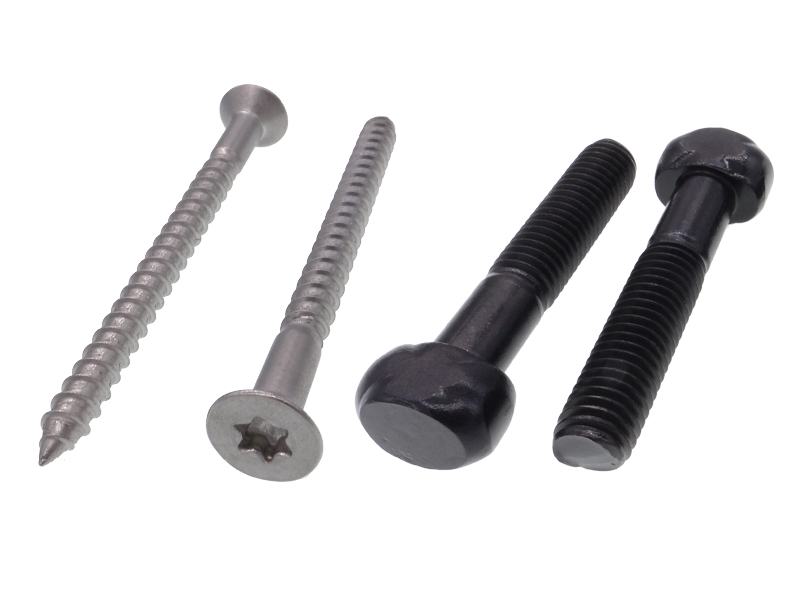Screws and bolts are both types of fasteners that are used to join two or more components together. The main difference between the two is how they are installed and their intended use.
Screws are typically installed by rotating them into a pre-tapped hole in one of the components being joined. They have a pointed tip and threads that extend along the entire length of the shaft, allowing them to form a secure connection with the material they are being screwed into. Screws are commonly used in applications where the joint may need to be disassembled at some point, such as in woodworking, electronics, and construction.
Bolts, on the other hand, are usually installed through a pre-drilled hole in both components being joined, and then secured in place using a nut on the opposite end. Bolts have a smooth or partially threaded shank and a head at one end that provides a bearing surface for a wrench or other tool to apply torque. The threaded end of the bolt protrudes through the hole in the second component, and a nut is threaded onto it and tightened to create a secure joint. Bolts are commonly used in applications where a strong and permanent connection is required, such as in machinery, automotive manufacturing, and structural engineering.
In summary, screws are typically installed into a pre-tapped hole and can be easily removed, while bolts require a nut and are used for creating permanent connections.





